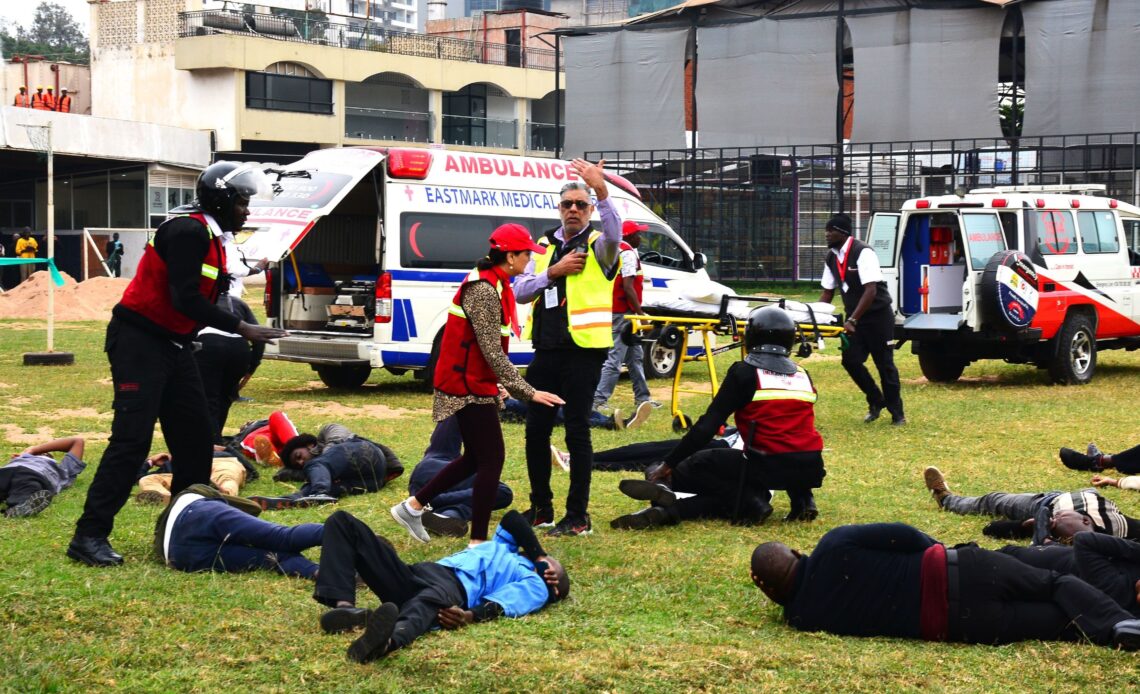Aga Khan University Hospital has joined forces with M.P. Shah Hospital, Gertrude’s Children’s Hospital, and Avenue Hospital in a large-scale emergency preparedness drill designed to test readiness in handling mass casualty incidents.
The exercise, staged at the Aga Khan Sports Club Pavilion, simulated a lone shooter attack in a workplace setting, leaving 70 mock casualties with critical injuries. The drill evaluated hospital systems, staff responsiveness, and inter-agency collaboration under high-pressure conditions.
“Drills like this are critical because they allow hospitals to test and strengthen their emergency preparedness without the consequences of a real incident,” said Dr. Benjamin Wachira, Emergency Physician at Aga Khan University Hospital and Lead Coordinator of the drill. “They provide an opportunity to evaluate systems, staff readiness, coordination with partners, and response times under pressure.”
Triage was conducted at the scene by the Ismaili Jamati Health Board, after which patients were transferred to the four participating hospitals for advanced care. Transfers were facilitated by E-Plus and Rescue.co ambulance services.
The three-hour exercise drew observers from the United States, British, and Canadian embassies, alongside officials from the National Disaster Management Unit and the National Police Service. Their assessment focused on strengths and gaps in coordination, response time, and inter-agency collaboration.
“Emergencies, especially large-scale incidents, rarely affect a single facility. Bringing together four major hospitals, ambulance services, and disaster management agencies allows us to test our collective capacity to share patient loads, coordinate resources and communicate effectively. This builds the trust and coordination essential for saving lives in real crises,” Dr. Wachira added.
Key successes highlighted in the drill included rapid activation of emergency plans, effective interdepartmental coordination, and efficient triage and treatment of patients. Areas requiring improvement were noted, particularly the integration of prehospital coordination between ambulance teams and healthcare facilities.
A formal debrief followed the simulation, with all participating teams documenting findings and setting improvement timelines. The lessons will be incorporated into ongoing staff training and updates to hospital standard operating procedures, to be tested in future simulations.


